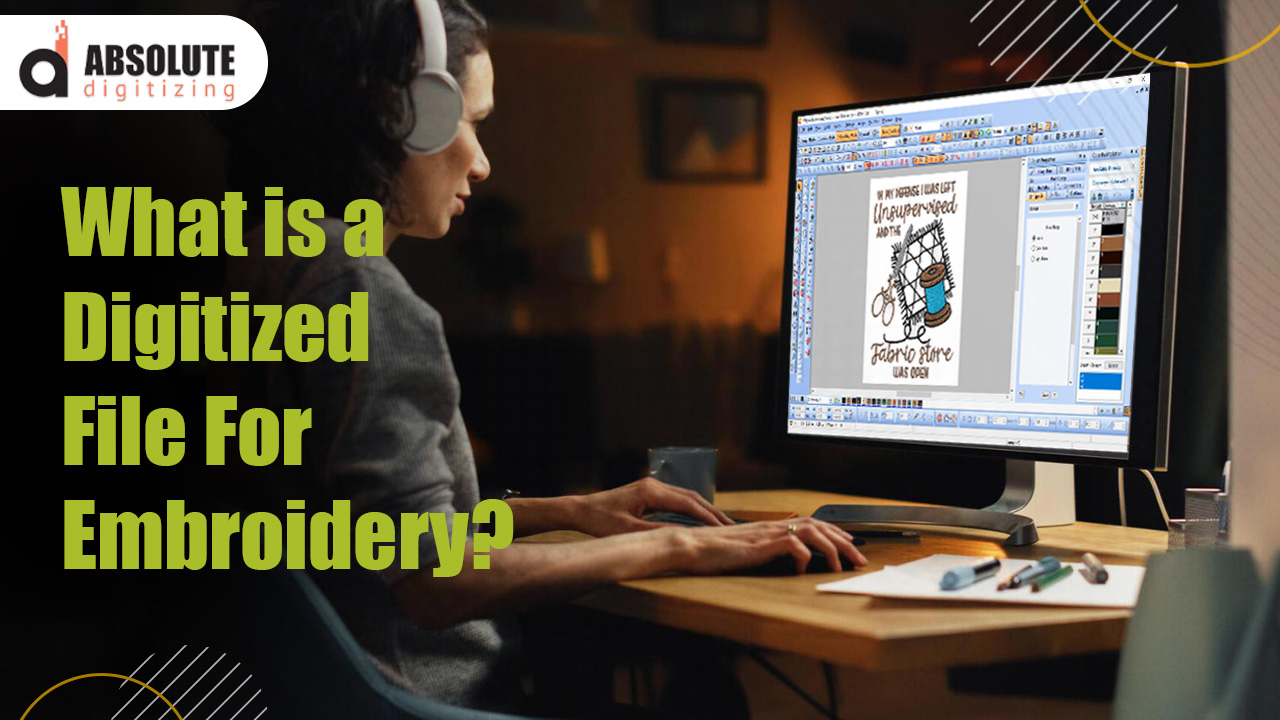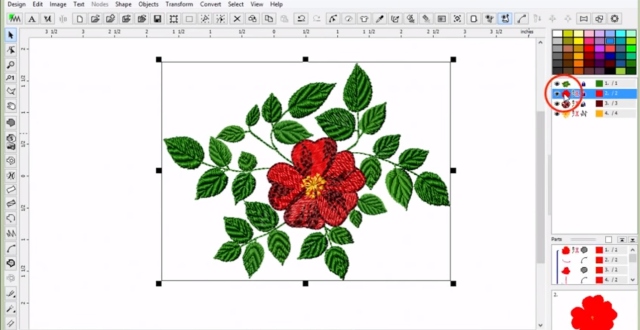Wondering, what is a digitized file for embroidery?
A digitized file is an important element in the entire process of embroidery digitizing. It is a file created in a machine-readable format for the embroidery machine so that further process can be done. The machine will understand the design present in a file and will place it on a product with stitches.
If you are looking to get in touch with professionals for embroidery digitizing services, then Absolute Digitizing is the right place to visit. The expert team will properly understand your needs to provide you the best work. You can get a wide range of services within an affordable price tag.
What is Digitizing?
Digitizing is relative to embroidery. It is the process of conversion of a file into a sequence of instructions to the embroidery machine. The machine will interpret to sew the thread in a specific way. Remember that good digitizing is an art. This is the key to get an attractive embroidered design.
If you have gone to a market to get apparel embroidered, then you might have heard of digitizing. Well, the salesperson was not charging you much by saying that you have to digitize your design. Note that digitizing is very essential to embroider a design on a garment. It is a pre-requisite thing, without this, you are not able to do your work.
Digitized Embroidery File
In the majority of the case, you will not have these files. In some cases, you might have made one but that’s very rare. The digitized files will not be included when graphic design is making a logo or do the designing for you. This is a very different entity in comparison to the vector art files. You can use these files with only commercial embroidery machines. Remember that if you are not having embroidery digitizing software, then you can not open the file. In the majority of the cases, if you are having a digitized file, then you will have a run sheet as well. This is mostly in a PDF file. This will help the embroidery machine operator to see the colors and sequences of the embroidered design.
Important Digitizing Instruction
Now, we will be discussing some of the important instructions that one should keep in mind. The digitized file is having some very important details. The essential aspects are listed below:
Path
A digitizer is responsible to identify a path for the embroidery. The embroidery path will tell the starting and ending point of design to the machine. In addition to this, it will also explain the order in which each part of the design is embroidered. For instance, it will tell the machine to sew the fill of the design and then move toward the border over the edge. If this is not the case, then your design looks odd once you complete your task.
Underlay
Underlay stitching is one of the initial stitching in a design. These special stitches will be responsible for holding the fabric. They will also lay down the fibers of a garment, to enable the main portion of the design to sit on top.
Pull Compensation
The next important element is the Pull compensation. This is a factor through which embroidery compensates for the different types of fabric. Note that some fabrics will not stretch at all. For example, leather is very rigid. Some other fabrics are extremely stretchable like polyester/spandex blended polo stretches. This fabric stretches more in comparison to the cotton t-shirt. The adjustment of the pull compensation will enable a design to sew it in a right way on different fabrics.
Stitch types
The next important thing will be the type of stitches that we will utilize in our design. For your information, there are three types of embroidery stitches:
Run Stitch: A run stitch is one of the basic stitches. It is also known as a straight stitch. We will use this type for tiny thinnest parts of a design that will include thin borders and text.
Satin Stitch: It is a series of flat stitches that are used to cover a section of the background fabric. We frequently use it for the majority of the text, some details, and for the thick borders.
Fill Stitch: As the name indicates, these stitches are tightly compact stitches. We use them to cover large areas in a design. It is important to note that there are many variations of fill stitches. Note that you have to use fill stitches strategically for creating patterns in design by sewing the thread in various directions.
It is very important to understand the fact that instructions in a digitized file are very precise for every job. In most cases, you will need a new file for each garment type. For instance, if you are going to print a design on a baseball cap, hoodie, or on a polo, then you will need three unique digitized files.
Embroidery Files and Digitizing Software
As we have discussed above that you need digitizing software in the process to see the file. Pulse and Wilcom are two popular digitizing software available in the market. There are also many others but all software are having the same feature with some slight changes. Remember that a digitizer can pick any of the software according to their own personal preference.
Conclusion
Now, you have your answer to what is a digitized file for embroidery. You should be aware of all the important aspects that you need to keep in mind for a file.
Looking to contact a professional company for embroidery digitising services? You should contact Absolute Digitizing for the best results. We provide custom embroidery digitizing service for caps, apparel, jackets, badges, and much more. The expert staff will be ready to help you out in the best way possible. We will provide high-quality designs within a turnaround time of 2 to 12 hours. Our customers will get the designs on time without any delay. The price is $1/1000 stitches.
Get in Touch with Us To Request A Free Quote!



